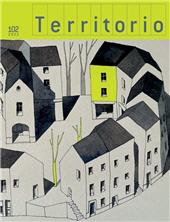La risposta al problema della casa a Milano negli anni della Ricostruzione (1945-53)
P. 7-13
All'indomani della seconda guerra mondiale la condizione abitativa a Milano è drammatica. Le stime del patrimonio abitativo perduto a causa delle distruzioni belliche lo quantificano tra il 15 e il 25% di quello preesistente. Il primo periodo della ricostruzione, tra il 1945 e il 1953, si caratterizza per la lentezza e soprattutto per l'esiguità di risposta al problema della casa per la componente più povera della popolazione. Il saggio propone un quadro dettagliato di questo primo periodo, per poi concludersi col riferimento a un diverso principio su cui si sarebbe potuta impostare la ricostruzione, concretato dall'esperienza del QT8 e del Monte Stella come 'sogno' perseguito da Piero Bottoni - per 'una casa per tutti'. [Testo dell'editore]
In the aftermath of World War II, the housing condition in Milan is dramatic. Estimates of the housing stock lost due to wartime destruction put it at between 15 and 25 percent of the pre-existing stock. The first period of reconstruction, between 1945 and 1953, is characterized by the slow and especially scant response to the housing problem for the poorest component of the population.This essay offers a detailed overview of this first period, and then concludes with a reference to a different principle on which reconstruction could have been set, concreted by the experience of QT8 and Monte Stella as a ‘dream' pursued by Piero Bottoni - for ‘a house for all.' [Publisher's text]
Fait partie de
Territorio : 102, 3, 2022-
Articles du même numéro (disponibles individuellement)
-
-
Informations
Code DOI : 10.3280/TR2022-102001
ISSN: 2239-6330
KEYWORDS
- Ricostruzione postbellica; Milano; casa
- Postwar reconstruction; Milan; housing


